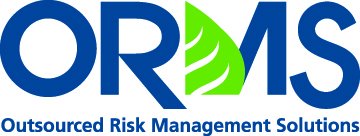5 Trends to Watch in CRE Lending
2020 was an extremely challenging year in the commercial real estate market. The impacts of the pandemic have been disruptive and far-reaching, touching on virtually every sector of the broader market and introducing unforeseen risks into CRE loan portfolios. Overall, commercial real estate valuations fell by as much as 10% at the height of the crisis in Q2 2020.
However, 2021 has been a story of recovery, and leading CRE property price indexes are now down by just 1% since January 2020. Additionally, certain niche sectors performed better than expected during the pandemic, particularly those related to growing industries like healthcare and eCommerce, which drove the need for additional warehousing and data center space.
Lingering uncertainty remains, so lenders should take a cautious view toward overweighting their portfolios with CRE loans. Ongoing concerns related to the highly transmissible Delta variant are leading to fitful business reopenings and the reintroduction of masking and social distancing mandates in certain jurisdictions, when combined with indicators of rising inflation means the market is in for a bumpy ride in the short term. But experts predict the overall sector will generally improve and stabilize over the next 12-24 months.
Top CRE Trends for 2022
Here are the 5 top trends we’re watching in CRE lending:
- Niche properties continue to lead rebound: Industrial and specialty properties led the way during the pandemic, as lockdowns and work from home spurred the remarkable boom in online shopping. Data centers and storage was the only real estate sector to enjoy strong growth of 8.8% in the first quarter of 2020, and it has stayed red hot as demand for server farms from leading eCommerce companies like Amazon and Wayfair has driven up property prices in this segment. Likewise, warehouses and distribution centers have also benefitted from eCommerce growth, and industrial property transactions represented the second-largest segment by volume at $51.9 billion in the first half of 2021.
- Multifamily is on way to recovery: Although multifamily suffered mightily in 2020, the apartment CRE market has been the strongest growing sector in 2021, with commercial sales transactions up by 64% in the first half of 2021, marking the largest deal volume across any CRE segment at $92.1 billion.
- Office market will improve as employees return to work: Employees are slowly but steadily returning to the office, a trend that bodes well for office occupancy and resultant valuations. Just 14% of workers reported teleworking as of June 2021, down from a high of 35% in May 2020. The CEO of leading commercial real estate firm Cushman & Wakefield recently predicted a full recovery of office employment by the middle of 2022.
- Retail and hospitality won’t fully recover for 24 months, if ever: Brick and mortar retail was one of the biggest losers from the pandemic. More retailers declared bankruptcy in 2020 than in any year since the 2009 financial crisis, and CBRE predicts retail real estate will decline by 20% by 2025. Meanwhile, the hotel sector continues to struggle despite this summer’s travel boom, and advance reservations are softening as a weary public delays fall business and leisure travel due to resurgent coronavirus fears.
- The demise of urban centers is premature: Much was made in the early days of the pandemic about mass outmigration from dense urban areas to the suburbs. Major cities like New York, Chicago and San Francisco became ghost towns as offices shut down and people realized they could work remotely from anywhere. Yet, it seems this trend has been greatly exaggerated. According to a study by The New York Times, urban-to-suburban moving patterns in 2020 were largely consistent with those seen pre-pandemic. This is good news for urban-centric CRE portfolios, especially in the office and multi-family sectors.
How to Maintain a Healthy and Profitable CRE Portfolio During Times of Uncertainty
There is little doubt that CRE lending is a volatile and dynamic sector right now, and the need to establish prudent and forward-thinking risk management strategies has never been more critical. We recommend maintaining solid due diligence and underwriting practices to help protect against uncertain risks and market volatility over the next 24-48 months, until the overall market stabilizes.
One key to maintaining a well-rounded and profitable CRE lending portfolio is to partner with an experienced outsourced risk management firm. When you’re ready, reach out to ORMS – your risk management experts!
